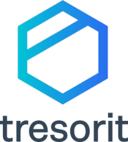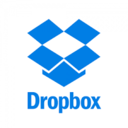Best Secure Storage & Backup Services Curated by GitHub Users
Open Source and Always a Work in Progress (WIP)
Open Source and Always a Work in Progress (WIP)
This technical assessment provides an evidence-based analysis of cloud storage and backup services. This framework prioritizes empirical analysis via independent security audits, public source code availability, end-to-end encryption implementation, and metadata protection capabilities.
Our evaluation considers:
1. Code Transparency: Public availability of source code
2. Independent Verification: Third party security audits
3. End-to-End Encryption (E2EE): Client-side encryption before upload
4. Metadata Protection: Protection of filenames, folder structure, and file metadata
5. Zero-Knowledge Architecture: Provider unable to decrypt user files
6. Self-Hosting Capability: Can users run their own backend
7. Local-Only Mode: Can function without cloud dependency
| Rank | Service | Source Available | Proof | Default E2EE | Metadata Protected | Self-Host | Local-Only |
|---|---|---|---|---|---|---|---|
| 1 |  Cryptomator Cryptomator |
Yes | Yes | Yes | Yes | Yes | Yes |
| 2 |  Proton Drive Proton Drive |
Yes | Yes | Yes | Yes (partial) | No | No |
| 3 |  Tresorit Tresorit |
No | Yes | Yes | Yes (partial) | No | No |
| 4 |  Filen.io Filen.io |
Yes (clients) | Yes (partial) | Yes | Yes (partial) | No | No |
| 5 |  Sync.com Sync.com |
No | No | Yes | Yes (partial) | No | No |
| 6 |  MEGA MEGA |
Yes (clients) | Yes (partial) | Yes | Yes (partial) | No | No |
| 7 |  Nextcloud Nextcloud |
Yes | Yes | No (optional) | No | Yes | Yes |
| 8 |  Seafile Seafile |
Yes (partial) | No | Yes (optional) | No | Yes | Yes |
| 9 |  iCloud Drive iCloud Drive |
No | No | No (ADP optional) | No | No | No |
| 10 |  OneDrive OneDrive |
No | No | No | No | No | No |
| 11 |  Google Drive Google Drive |
No | No | No | No | No | No |
| 12 |  Dropbox Dropbox |
No | No | No | No | No | No |
The following storage solutions represent the highest level of privacy protection. They cannot access your data by design.
These services implement end-to-end encryption by design, but still expose some metadata to the provider and may have protocol limitations under a malicious‑server model.
Security and privacy depend entirely on your server setup and configuration.
These services control encryption keys for typical usage and can technically access both content and metadata, although some now offer opt‑in or limited forms of client‑side encryption for specific plans or file types.
 1. Cryptomator
1. Cryptomator 2. Proton Drive
2. Proton Drive 3. Tresorit
3. Tresorit 4. Filen.io
4. Filen.io 5. Sync.com
5. Sync.com 6. MEGA
6. MEGA 7. Nextcloud (Self-Hosted)
7. Nextcloud (Self-Hosted) 8. Seafile
8. Seafile 9. iCloud Drive
9. iCloud Drive 10. OneDrive
10. OneDrive 11. Google Drive
11. Google Drive 12. Dropbox
12. DropboxCryptomator represents the gold standard for storage privacy by eliminating trust requirements entirely. Its client-side vault encryption ensures zero visibility for any cloud provider. For users requiring cloud-native solutions, Proton Drive offers the best balance of E2EE protection and usability, though with some metadata exposure. Self-hosted solutions like Nextcloud provide control but require technical expertise and proper E2EE configuration.
Services like Google Drive, Dropbox, and OneDrive should be considered convenience tools rather than privacy solutions, as they maintain full visibility into both content and metadata.